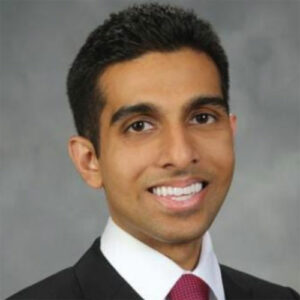
Table of Contents
Partners can participate in the National Resident Matching Program (NRMP) Match as a couple, but there are a few extra steps you need to understand before tackling the couple’s rank order list (ROL).
Couples often connect their ROLs so that they can match with residency programs in the same geographic area. Keep reading to master the Couples Match and avoid getting caught off guard by the process.
Get comprehensive support to prepare your residency application from Physician Advisors who understand the Couples Match inside and out.
Couples Match Basics
The Couples Match is for partners who want to link their rank order lists to match with residencies in the same area or at the same institution. There are several differences in how the algorithm matches couples versus individuals.
Who is eligible for Couples Match? Any two people can partner with one another on NRMP’s R3 System. (The 3 R’s are Registration, Ranking, and Results.) You don’t have to be married or even in a romantic relationship.
How do you partner? First, both individuals must register for the same Match. Then, one of you needs to initiate a “couples request,” and the other must accept. The process is complete when the Couple Status in the R3 system is “Accepted” and the Fee Status is “Paid.”
Does it cost extra? Both partners must pay the $45 couple fee, for a total of $90. The first $45 fee is due when you initiate the couple’s request, and the second $45 is due when the other person accepts the request. You can uncouple, but the fees are non-refundable no matter what.
How is it different? The NRMP algorithm requires couples to connect each residency on your ROL with another residency on your partner’s ROL. The algorithm matches you by these program pairs, not by single-ranked programs.
Can you list a residency more than once? Yes, you can list the same residency multiple times, each time linked to a different program from your partner’s ROL. You can list a maximum of 300 program pairs. There are additional fees for longer ROLs.
What is No Match? You can list No Match alongside one of your partner’s ranked residencies, indicating that you’re okay with your partner getting matched at that program and not being matched at all yourself. I recommend only using No Match codes later in your ROL, not near the top.
The No Match code for residencies is 999999999. The No Match code for fellowships is 888888888.
What are the pros? The main benefit is that couples can go to a residency near one another. You and your partner likely want to match in the same geographic location, and the Couples Match helps to make that happen more easily.
What are the cons? The main drawback is that the NRMP algorithm only matches couples’ pairs of programs, not individual programs, so you might miss out on a top-choice residency because your partner doesn’t rank. If all pairs of programs are exhausted, the algorithm will not try to find a match for you as an individual.
What salary will I make during residency? If you and your Couples Match partner are both matched to the same program, you’ll make the same salary during each program year of residency. That’s because residency salaries are standardized within healthcare systems, and all residents (with a couple of small exceptions) are assigned the same salary based on program year. Read all about average residency salaries in this article.
Building Your Rank Order Lists (ROLs) With Examples
Couples need to build rank order lists a little differently than individuals do. First, register for the NRMP Match and then send or accept a couple’s request to your partner. Now, let’s build that couple’s rank order list. Here’s an example:
| You | Partner |
| 1. Internal Medicine, University of Miami | 1. Dermatology, Broward Health |
| 2. Internal Medicine, University of Colorado | 2. Internal Medicine, University of Colorado |
| … | … |
Each ranked program will line up with the same ranking on your partner’s program list. For instance, if you list the University of Miami at #1, and your partner lists Broward Health at #1, those programs are linked. One of you will only match at rank #1 if the other matches at rank #1 — the algorithm matches you as high on your ROL as possible.
A common question I hear is: Can partners match into different specialties? Absolutely! There is no requirement to apply for the same specialty or different specialties.
Read Next: 10 Medical Specialties with the Best Work/Life Balance
The algorithm ranks couples in pairs. If one or both of you don’t match at rank #1, the algorithm moves on to rank #2. It doesn’t treat your ROLs as individual rank order lists. Using the above example, if your partner would be a match at Broward Health individually, but you are not a match at the University of Miami, the algorithm moves on and does not match your partner at Broward.
Couples cannot be individually matched unless you use the No Match code on certain rankings. Don’t use No Match until late on your ROL. (See example below.)
What’s the ideal number of ranks for the couples' match? I recommend exhausting every possible pairing of programs that would feasibly work for you both. Don’t put down anything you wouldn’t want to accept, but be open to most possibilities.
For example, if you both had 10 interview invitations, that would make for a maximum of 121 rankings, including all the “No Match” pairings. NRMP allows for 300 ranks. Why not allow for every possibility that would actually work for you? List all 121 pairs! Plus, there’s always SOAP.
You and your partner will likely have to compromise. Align your career goals, but consider all options. For example, if you’re a great match for the NYC residency of your dreams, but your partner isn’t competitive for any NYC programs, you have to be prepared not to match at your dream residency.
I recommend listing the same preferred program multiple times to boost your chances of couple matching. Then your partner can rank different program choices alongside your preferred residency. Here’s a second example:
| You | Partner |
| 1. Cardiology, Mount Sinai | 1. Internal Medicine, Mount Sinai |
| 2. Cardiology, Mount Sinai | 2. Internal Medicine, Columbia University |
| 3. Cardiology, Mount Sinai | 3. Internal Medicine, NYU Langone Long Island |
| … | … |
| 36. Cardiology, Mount Sinai | 36. No Match (999999999) |
If your ROL looks like this, you have a better chance of matching at Mount Sinai while your partner has multiple opportunities to match with a nearby NYU residency.
Of course, if all geographically nearby programs are exhausted from your partner’s ROL, Mount Sinai is no longer an option on your ROL. Unless your partner lists No Match next to a Mount Sinai ranking, in which case your partner would be unmatched if you get matched at Mount Sinai.
Reminder: Put any No Matches near the bottom of your ROL to reduce the chances of you or your partner not matching into any residency (and having to go through SOAP during Match Week).
Advanced and Supplemental ROLs
If you’re applying to an advanced program, each advanced residency on your couples match ROL needs to attach a supplemental rank order list for preliminary or transitional PGY-1 programs (or no supplemental list).
Learn More: Categorical vs. Preliminary vs. Advanced Residency Programs
The algorithm only considers a supplemental ROL after you obtain a match for the linked advanced residency. The PGY-2 and PGY-1 programs are not considered as a unit by the NRMP algorithm.
No matter how many advanced residencies you’re ranking, the supplemental ROL will need to be the same.
Each partner can rank up to 20 supplemental rankings before extra fees kick in. However, the NRMP website says its algorithm counts each supplemental ranking in all attached lists.
This means you could list 10 preliminary programs on your supplemental list. Still, if you list three advanced residencies, all with the same supplemental ROL, the NRMP counts that as 30 supplemental rankings, so additional fees would apply. There are extra fees for lists over 100.
Common Mistakes to Avoid
It takes a little extra effort to make a Couples Match rank order list, so you don’t want to waste time with mistakes. Here are some common mistakes you can avoid when doing Couples Match:
- Don’t list No Match codes too high. Because a No Match means only one partner is matching at that rank, we want those to be a last resort. Let’s try to get both of you matched first. Unless you and your partner agree to prioritize a dream scenario residency, put all the paired ranks with No Match program codes at the bottom of your list.
- Don’t rank too few programs, and don’t get too picky. You both want to match. If you interviewed somewhere and would be okay going to residency there, put it on your ROL. Rank it low, but don’t leave it off your list unless you absolutely would never want to go there.
- Don’t use too narrow a location area. The Couples Match is best for letting couples complete residency near one another, perhaps even at the same institution or program. However, it’s normal for one or both partners to drive over an hour to get to their residency. Consider broadening your definition of “same geographic area”, or consider what you would do if only one partner matched. Take a year off to make your ERAS application more competitive?
- Don’t forget to list programs multiple times. You can list up to 300 rankings on your ROL. If you really want a particular residency, ensure to list it multiple times and pair it with every feasible option on your partner’s ROL. Remember, the Match algorithm only considers pairs of programs, not individual programs, when couple matching.
Boost Your Chances of Matching! Read About Residency Signals.
Average Success Rate
Couples have a slightly higher chance of at least one partner matching and a slightly lower chance of both partners matching compared to the match rate of U.S. med school seniors.
Below is a breakdown of recent PGY-1 match rates:
- 93.5% of U.S. MD seniors
- 93.2% of couples where at least one partner matched
- 92.6% of U.S. DO seniors
- 89.1% of couples where both partners matched
- 67.8% of U.S. citizen international medical graduates (IMGs)
- 58.0% of non-U.S. citizen IMGs
In 2025, 1,259 couples submitted certified ROLs. 35 couples didn’t match at all. There were 102 couples where only one partner matched, and the other had a No Match code linked to the program their partner matched to.
What if One or Both Don’t Match?
If one or both of you don’t match at first, every unmatched applicant (coupled or uncoupled) has the opportunity to participate in the Supplemental Offer and Acceptance Program (SOAP) during Match Week.
Learn more about SOAP in this Match Process article’s SOAP section.
If one of you matches, and the other doesn’t find success with SOAP, or if both of you don’t match at all, consider taking a gap year or a “growth year” to boost your competitiveness as a residency applicant for the next application cycle.
Note: The only way that one partner in a couple would match while the other doesn’t is if you linked the No Match code with your partner’s matched program. This special code is for couples to say you’d be okay if just one of you matches into a particular program while the other does not.
FAQs
Residency programs do not automatically know you’re couples matching. You are able to disclose that you’re couples matching at the application, interview season, and rank order list stages, but you are not required to.
I generally recommend that residency applicants disclose their couples matching. It is typically beneficial for programs to know that if you end up matching with them, you have an additional reason to commit to that program. There’s no real drawback.
Also, if a couple is applying to the same place, programs are more inclined to interview Partner B, whom they originally wrote off, if Partner A shares that they’re couples matching. They may even arrange an efficient interview process to save you both time and money.
You can decouple your rank order lists at any time through the NRMP R3 System before the March 1st ROL Certification Deadline. However, the $45/person couple fee is non-refundable.
Get Personal Residency Match Support
The couples match process allows any two people to match with residencies in the same geographic area. It’s a little more complicated than the individual match process, but there are plenty of ways to get support.
Depending on how you link your rank order lists, this process could slightly decrease your odds of matching, but we can help mitigate that risk and actually boost your odds of matching.
Schedule a free consultation with our Enrollment Team to see if we’re a good fit to help you achieve your dreams with the Couples Residency Match.

Amar Mandalia, MD
Dr. Mandalia is an accomplished medical writer with multiple manuscripts in peer-reviewed journals and a practicing GI physician in the Orlando area. He is the Admissions Advisor for MedSchoolCoach and has extensive experience helping students get into medical school and residency.





